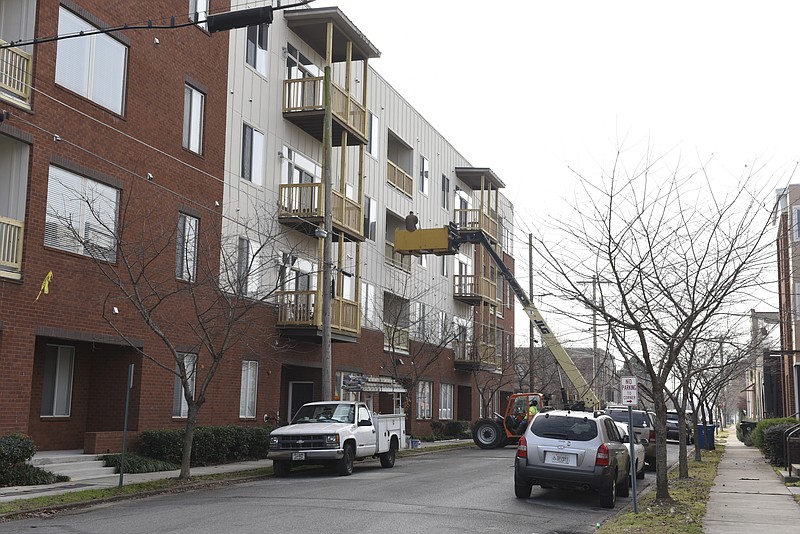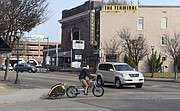Forum panelists
Ethan Collier: Owner of Collier ConstructionAnn Weeks: Board member of South Broad Street Redevelopment GroupPam Glaser: Member of Chattanooga Regional Planning AgencyIsaac Duncan: Board member of Sculpture Fields at Montague ParkHeather Jones: Vice president of East Lake Neighborhood Association
"Positive factor, the fast rate of change of development," said Isaac Duncan, who's on the board of directors for the Sculpture Fields at Montague Park. "Negative factor, the fast rate of change of development."
Duncan was one of five members on the second annual Southside Council on Thursday night at green|spaces on Main Street. The goal of the discussion was to address potential recreation and cultural areas on the Southside, said Dawn Hjelseth, president of the Southside Council. Also, what are the consequences, good and bad, of the area's rapid growth.
The transformation has been drastic, said Southside resident Nichole Jordan. When Jordan moved to the area in 1990, she would be afraid for her safety when stopped at a red light.
"Why I moved here was to enjoy walking everywhere and being outdoors," Jordan said. "All the renovations and all the cleanup has been good."
One of big topics of discussion was gentrification and its impacts to the area. Heather Jones, vice president of the East Lake Neighborhood Association, said her area sometimes is overlooked.
"I don't think Chattanooga considers East Lake part of Southside, really," Jones said. "When people think of Southside, they think of Main Street, being able to go to different restaurants, being able to go to cool shops, they think of this really local, cool culture. When people think of East Lake, they think of East Lake Courts, crime and poverty."
Part of that is because the gateway to East Lake - Rossville Boulevard - isn't aesthetically pleasing, she said.
During her presentation, she pulled up a Times Free Press article from 2009 describing the contrast between Rossville Boulevard in Georgia, which features brick sidewalks, benches and landscaped gardens along the road, and Tennessee, which is lined with fast-food joints, pawnshops and adult bookstores.
Sprucing that boulevard up with coffeeshops, or even something like a Target, would make people want to stop on the street instead of simply using it as a connector from Georgia to the interstate, she said. Something that would really help, Jones said, is adding homes near the road.
"I think Rossville Boulevard is Main Street 12 years ago," she said.
Ethan Collier, owner of Collier Construction, said building in the Rossville Boulevard area would require investment by the city. It would be too much of a business risk to build houses there, because people might not buy anything.
"I can't fathom doing residential growth there right now," he said.
Jones pointed out the diversity of the East Lake area, with black, white and Latino communities each comprising about a third of the total population.
There is a need for affordable housing, she said. To ensure racial and socioeconomic diversity, she suggested the city consider ordinances that a certain percentage of low-income housing make up a neighborhood.
Gentrification has both positive and negative effects, she said. The idea of coming into a poor community and diversifying the income levels is a good one. Poorer areas don't attract resources and businesses, so the economy doesn't grow.
However, you don't want the extreme of having every resident be the same socioeconomic status and race.
Liz Anderson moved to the Southside two years ago from the North Shore. She's never lived in a metropolitan area before, and she's enjoying it. She also talked about gentrification, and how important it is to keep diversity levels high.
She admitted she's not sure how to help.
"Only one house, directly across from mine, the lady has been living here for 30-plus years and she's African-American, multi generations living in her home," Anderson said. "And she's the only one. I don't want her to go away. But I don't know how, as a new person, to help with that or to be an advocate."
Contact staff writer Evan Hoopfer at ehoopfer@timesfreepress.com or @EvanHoopfer on Twitter or 423-757-6731.

